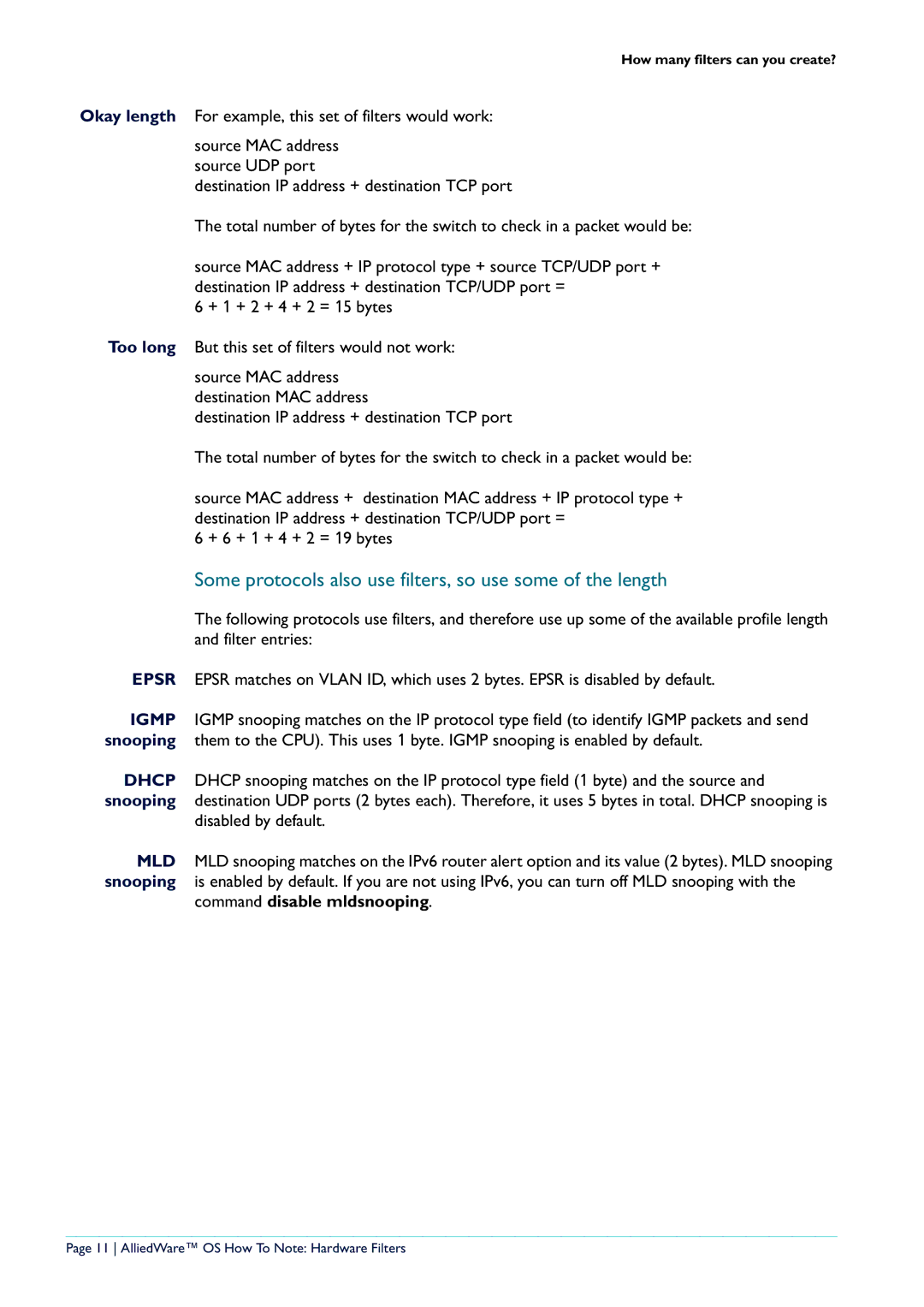How many filters can you create?
Okay length For example, this set of filters would work:
source MAC address source UDP port
destination IP address + destination TCP port
The total number of bytes for the switch to check in a packet would be:
source MAC address + IP protocol type + source TCP/UDP port + destination IP address + destination TCP/UDP port =
6 + 1 + 2 + 4 + 2 = 15 bytes
Too long But this set of filters would not work:
source MAC address destination MAC address
destination IP address + destination TCP port
The total number of bytes for the switch to check in a packet would be:
source MAC address + destination MAC address + IP protocol type + destination IP address + destination TCP/UDP port =
6 + 6 + 1 + 4 + 2 = 19 bytes
Some protocols also use filters, so use some of the length
The following protocols use filters, and therefore use up some of the available profile length and filter entries:
EPSR EPSR matches on VLAN ID, which uses 2 bytes. EPSR is disabled by default.
IGMP IGMP snooping matches on the IP protocol type field (to identify IGMP packets and send snooping them to the CPU). This uses 1 byte. IGMP snooping is enabled by default.
DHCP DHCP snooping matches on the IP protocol type field (1 byte) and the source and snooping destination UDP ports (2 bytes each). Therefore, it uses 5 bytes in total. DHCP snooping is
disabled by default.
MLD MLD snooping matches on the IPv6 router alert option and its value (2 bytes). MLD snooping snooping is enabled by default. If you are not using IPv6, you can turn off MLD snooping with the
command disable mldsnooping.
Page 11 AlliedWare™ OS How To Note: Hardware Filters
